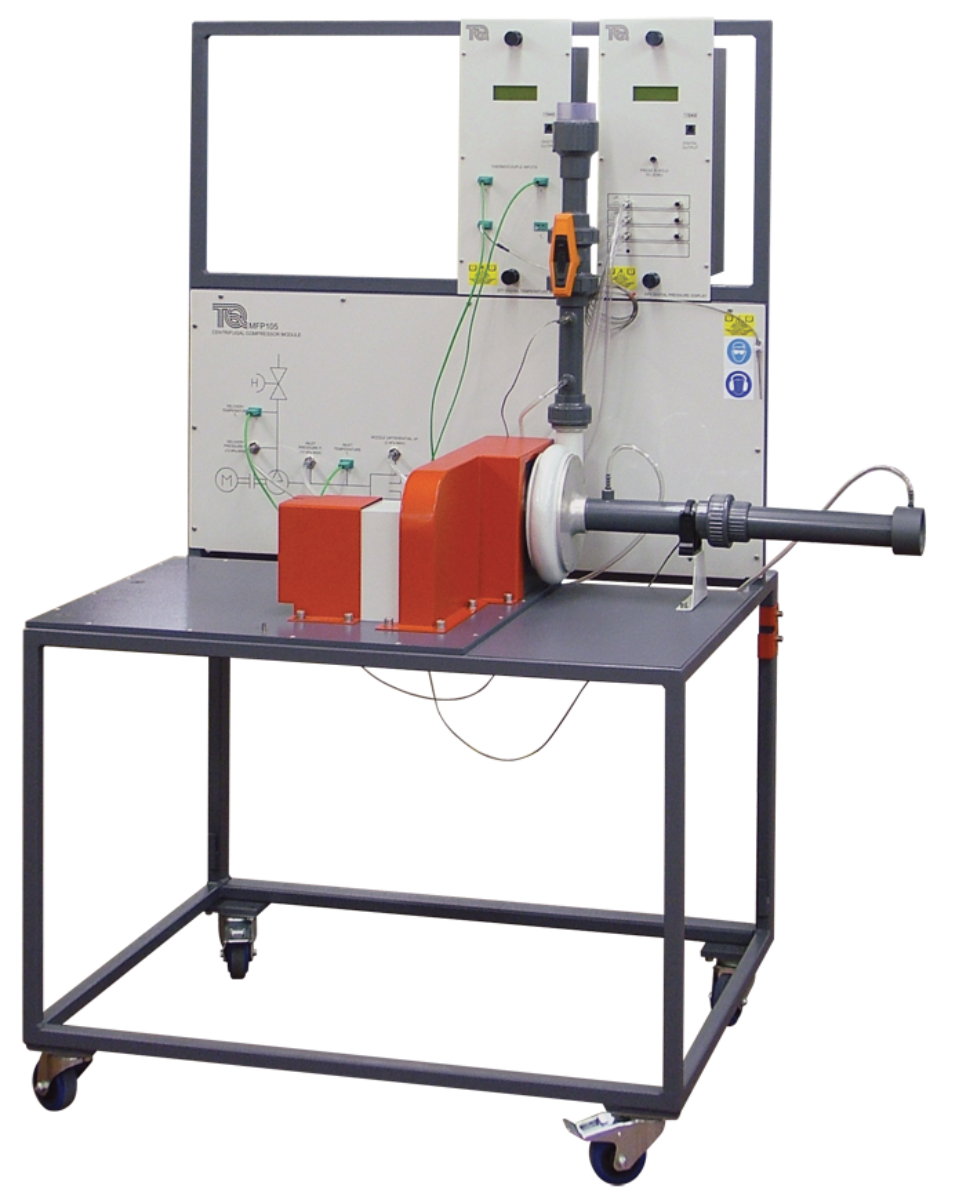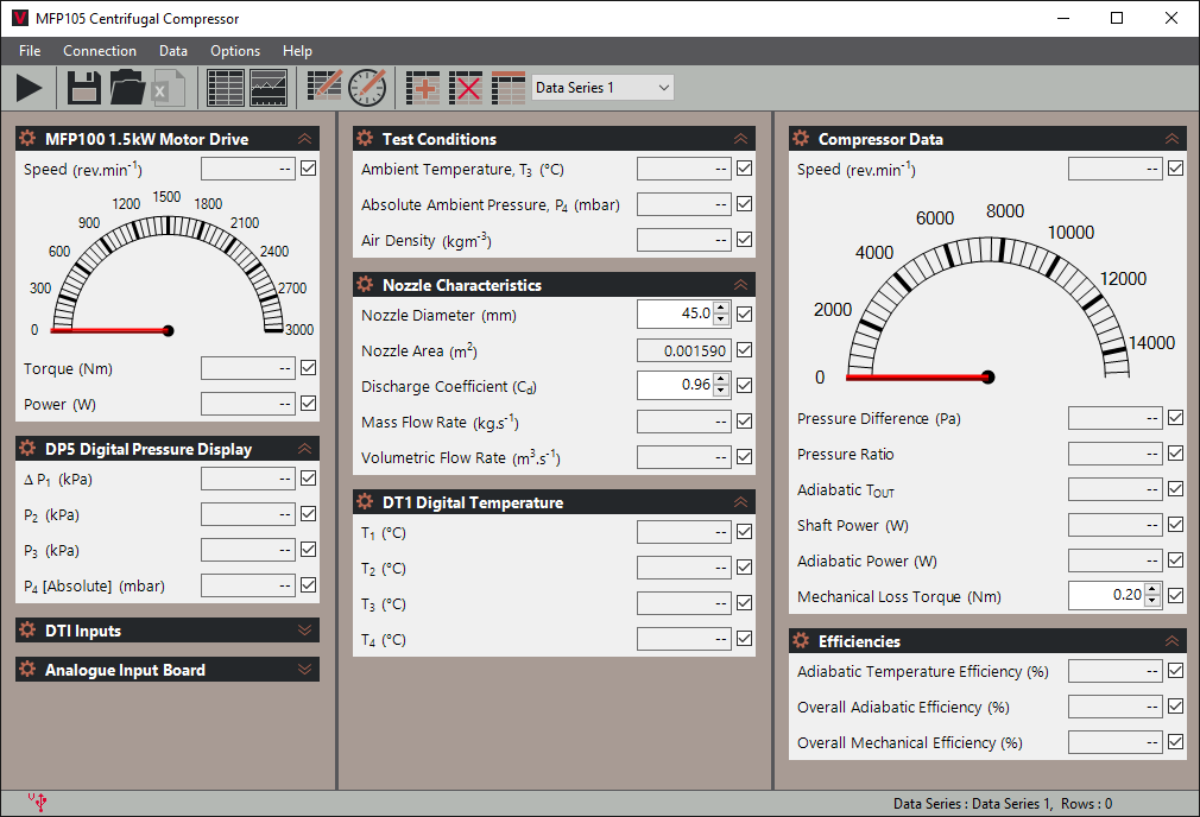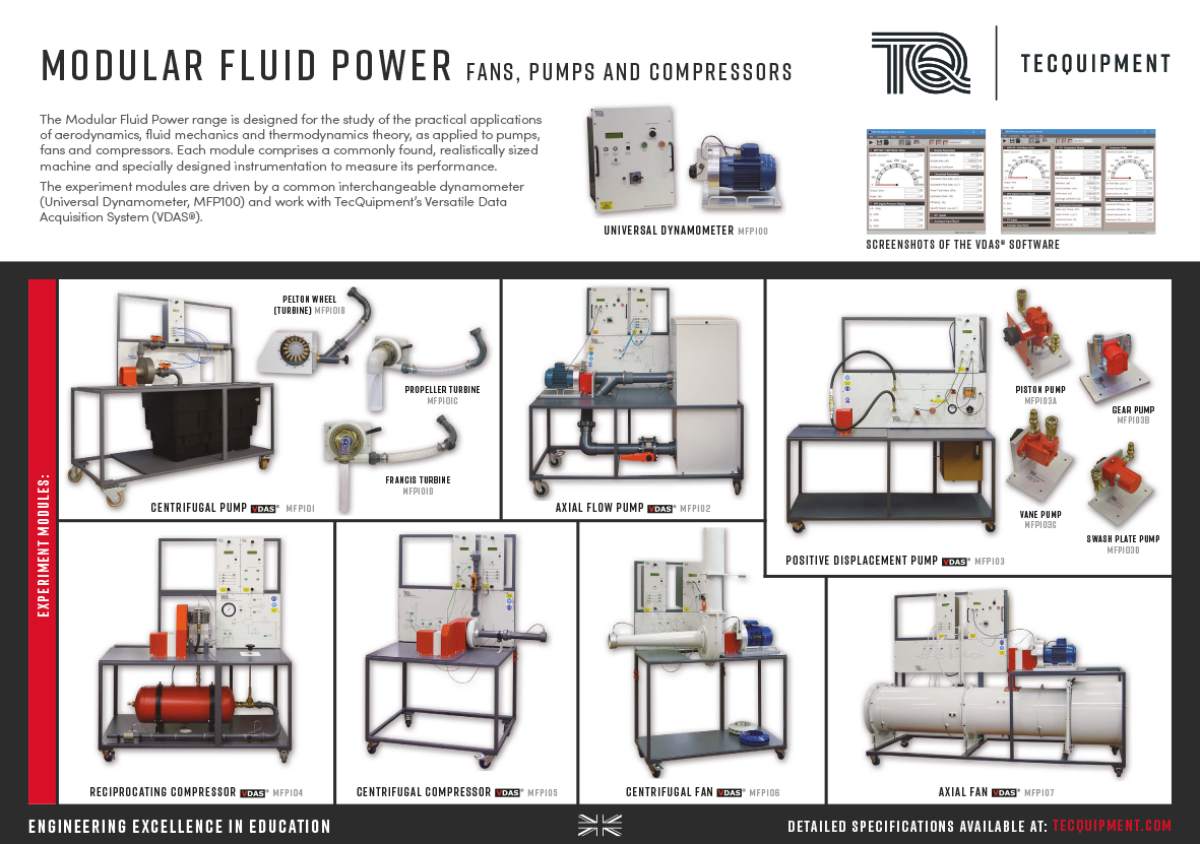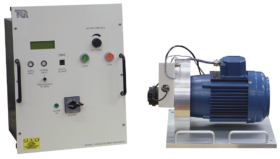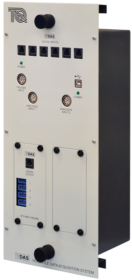CENTRIFUGAL COMPRESSOR MODULE
For use with the Universal Dynamometer (MFP100), the Centrifugal Compressor Module is part of TecQuipment’s Modular Fluid Power range. This range examines and explains fluid power machines. The Centrifugal Compressor Module is ideal for student experiments, demonstrations and projects.
Centrifugal compressors are common machines, used for forced ventilation in applications that need a good volume of air at a reasonable pressure - for example: forced ventilation and cooling systems.
The module consists of a compressor and instrumentation, all mounted on a robust, mobile trolley for ease of use. The module is for use with and driven by TecQuipment's Universal Dynamometer (refer to MFP100 datasheet). The Universal Dynamometer measures the speed, torque and power absorbed by the compressor. Speed is fully variable up to the maximum allowable for the compressor. Air enters the compressor through a shaped nozzle, used to measure the airflow rate. The air then moves past a hand operated delivery valve and out to atmosphere. The delivery valve controls the airflow rate (and therefore delivery pressure).
Electronic transducers measure the inlet pressure, delivery pressure, nozzle differential pressure (flow rate) and the atmospheric (barometric) pressure. Thermocouples measure inlet, outlet and ambient temperatures. Digital displays show all the readings.
For quick and reliable tests, TecQuipment can supply the optional VDAS® (Versatile Data Acquisition System). VDAS® gives accurate real-time data capture, monitoring and display, calculation and charting of all the important readings on a computer.
Learning outcomes
- Performance of a compressor
- Variation of compressor performance with speed
- Investigation of non-dimensional characteristics
- Comparison of performance with that of an ideal adiabatic system

 MFP105 - Experiment
MFP105 - Experiment
